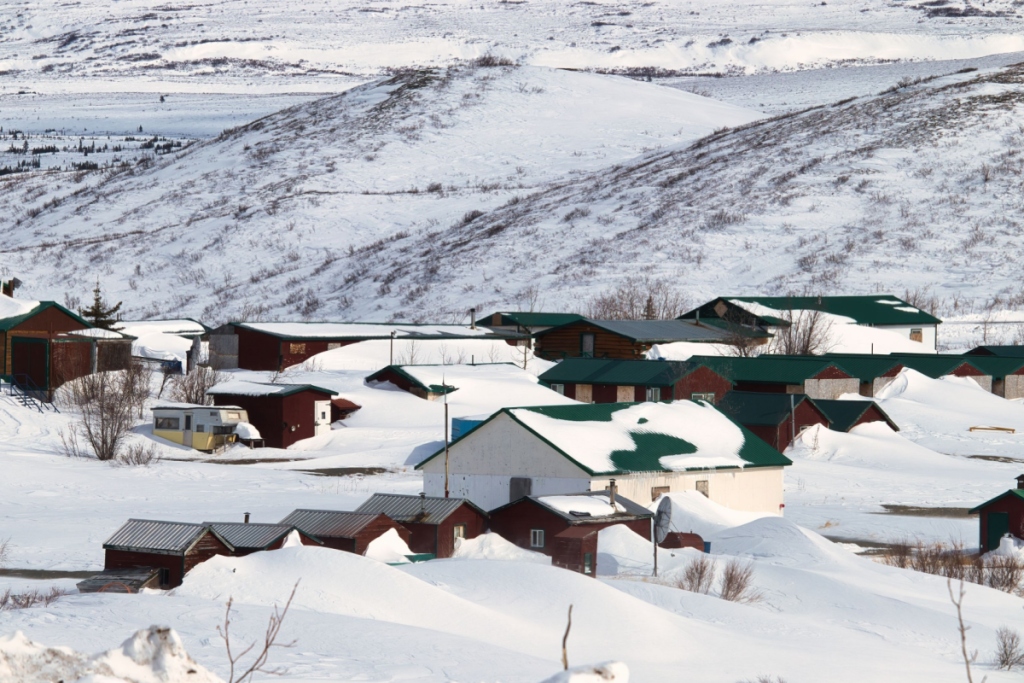Two remote Alaskan villages — Kipnuk and Kwigillingok — have been devastated by the remnants of Typhoon Halong, which tore through western Alaska over the weekend. The storm brought powerful winds, flooding, and storm surges that swept homes off their foundations, leaving catastrophic damage across the Yukon-Kuskokwim Delta. At least one person has been confirmed dead, two remain missing, and more than 1,400 people have been displaced.
Communities Ravaged by Flooding
The Alaska Division of Homeland Security and Emergency Management reported widespread destruction across several coastal communities. In Kipnuk, resident Brea Paul described a harrowing scene as roughly 20 homes floated away in the storm surge. “Some houses would blink their phone lights at us like they were asking for help, but we couldn’t even do anything,” she told the Associated Press.
Floodwaters inundated entire neighborhoods, with homes, vehicles, and boats swept into the sea. The U.S. Coast Guard released images showing extensive coastal flooding and debris fields stretching for miles. The combination of high surf and hurricane-force winds left many areas inaccessible, complicating early rescue efforts.
Casualties and Rescue Operations
The Alaska State Troopers confirmed that 67-year-old Ella Mae Kashatok from Kwigillingok was killed during the storm. Two other residents remain unaccounted for. Authorities announced Tuesday that search and rescue efforts had concluded after exhaustive operations involving drones, boats, and aircraft. The mission covered over 67.2 square nautical miles before transitioning to a recovery phase.
The search was a coordinated effort involving the U.S. Coast Guard, the Alaska Army National Guard, and the Alaska Air National Guard. Over 30 individuals stranded in isolated villages were rescued by joint military teams, according to U.S. Northern Command.
Mass Displacement and Emergency Response
Officials estimate that more than 1,400 residents across western Alaska have been displaced by the storm. Emergency shelters have been established in nearby communities, and the state’s disaster management teams are delivering food, water, and essential supplies to affected regions.
“Along with sheltering, we are focused on coordinating food, water, and emergency supplies to ensure that essential needs are met,” the Alaska Division of Homeland Security and Emergency Management said in a statement. “To those who have been displaced, lost homes, or are struggling in the aftermath of this disaster — please know you are not alone.”
Recovery and Rebuilding Efforts
Recovery operations are now underway as state and federal agencies assess the scale of the damage. Entire sections of Kipnuk and Kwigillingok will likely need to be rebuilt. The Federal Emergency Management Agency (FEMA) and local authorities are expected to coordinate long-term recovery plans, focusing on infrastructure repair, housing, and disaster preparedness for future storms.
Typhoon Halong’s destruction has reignited concerns about the vulnerability of Alaska’s coastal villages to climate-driven storms. Experts warn that rising ocean temperatures and retreating sea ice are increasing the intensity of storms hitting the state’s western coast — a trend that could threaten dozens of similar communities in the coming years.
As Alaskan families begin the long process of recovery, the disaster serves as a stark reminder of the growing impact of extreme weather in the Arctic region. While rescue efforts have ended, the focus now shifts to rebuilding homes, restoring vital services, and supporting communities devastated by one of Alaska’s most destructive storms in recent memory.


